Opinion
Is Art Criticism Today Too Affirmative? That’s the Wrong Question to Be Asking
"Negative Reviews? Part 1," from a 2-part essay on contemporary art writing.
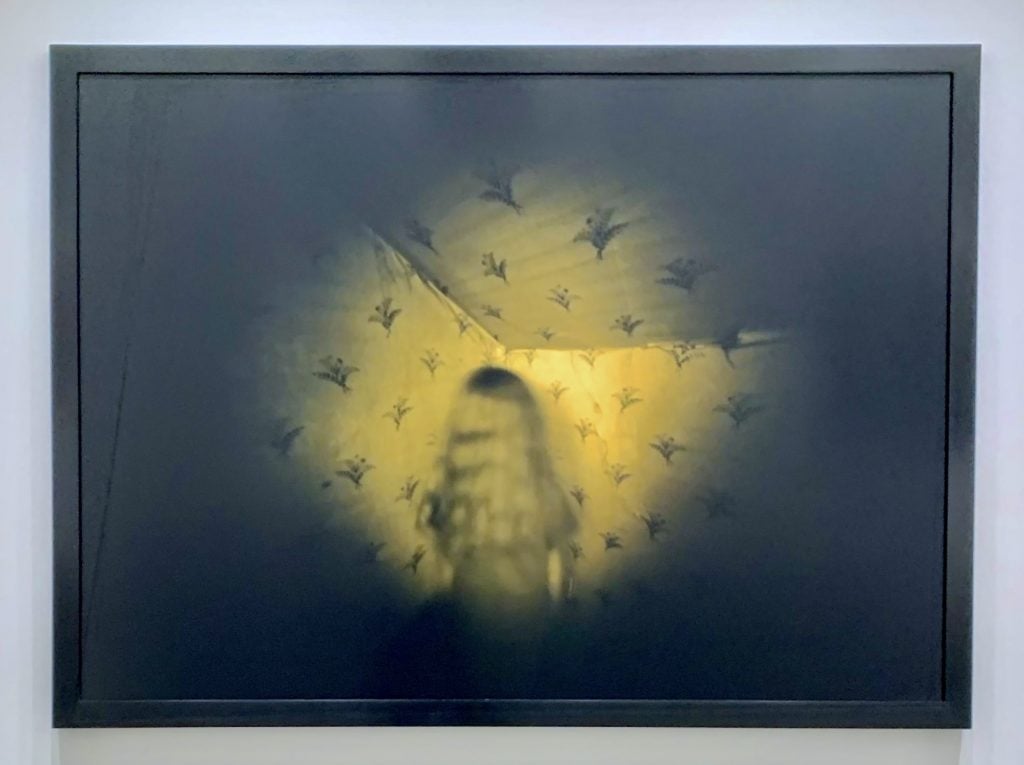
"Negative Reviews? Part 1," from a 2-part essay on contemporary art writing.

Ben Davis

Is art criticism now too positive? Are “negative reviews” what the doctor ordered to shake a sleepy scene awake?
Such is the argument of a text by the critic Sean Tatol for The Point this month called, appropriately, “Negative Criticism.” People are touting it very highly. It’s a text with an admirable sense of purpose, and I wish there were more like it. The strengths and weaknesses of Tatol’s position are worth engaging with—indeed, the virtue of debate to establish stakes is something Tatol lays out very clearly.
Tatol has earned a name for himself with the self-published Manhattan Art Review. As he explains in The Point, the publication is most famous for its “Kritic’s Korner,” a feed of capsule gallery reviews, modeled after rock critic Robert Christgau’s legendarily salty Village Voice music reviews. The “Korner” is very entertaining to read, Tatol’s squibs compressing a lot of thought and feeling into just a few cutting sentences. Often, he is flamboyantly negative, grading art on a scale of one to five stars, with a very steep negative bias.
Whatever you think about Tatol’s opinions—and people have a lot of opinions about Tatol’s opinions—the success of the Manhattan Art Review is something to be excited about. Aside from being an independent media project in the true sense, it’s got people debating small local gallery shows by not-famous artists, which is remarkable.

Music critic Robert Christgau at the Entermedia Theater in New York City, October 17, 1978. (Photo by Ebet Roberts/Redferns)
“Negative Criticism” is an essay-length defense of the Review as a project that is something more than just an entertaining record of what-was-on and what-was-good. Here is Tatol, laying out his mission:
Writing about art can have any number of objectives, but lurking behind any analysis is the question of judgment. Most contemporary art writing uses interpretation as a way of sidestepping the problem of quality, but interpretations are impossible to take seriously if the art itself is bad. A critic who avoids evaluation may have a less contentious body of work; perhaps they will protect themselves from ever saying anything that will sound embarrassing to future generations. The cost is that they won’t be able to help their readers learn how to judge art or to understand it, which are in essence the same thing. In my judgments of particular art shows I convey my understanding of art, or of good art, which I can only hope is of some use to others interested in developing their own taste. The goal of the Review has been to provide a quixotic counterweight to the prevailing conventions of art and commentary about art, which might otherwise, in their greed, indifference, and literal-minded sloganeering, counsel cynicism.
Over the course of the essay, Tatol implies different possible causes for a dearth of truly critical art criticism. These include: 1) commercialism within art and the consequent default towards the blandly promotional, 2) a general contemporary intellectual aversion to judgements of quality as such (what he calls “subjective absolutism”), and 3) a tendency of progressive critics to judge art positively based on it having a worthy message, singling out New York Times critic Holland Cotter. Of these, Tatol puts the most emphasis on the second. (The three correspond, incidentally, to the “greed,” “indifference,” and “literal-minded sloganeering” above.)
Even if these factors are more asserted than analyzed and could benefit from being teased apart, they do add up to something real, a cloying atmosphere that feels at once genteel and cynical. I know artists who have been plotting, quite independently of Tatol, to start something called the Bad Review just for pans. Granted, the complaint is neither new nor novel—Raphael Rubinstein wrote “A Quiet Crisis” in Art in America 20 years ago, and Jed Perl’s Authority and Freedom, which came out just last year, treads a lot of the same territory at book length—but there is clearly a reservoir of frustration built up that Tatol’s manifesto speaks to.
The question I am left with, however, is whether “negative criticism” is the right way to frame the solution, or even if “the question of judgment” is really a full picture of what is at stake. Let me explain.
In the long history of critics arguing with critics about criticism, one that stands out to me, when I think about assessing the argument in “Negative Criticism,” is Renata Adler’s famous 1980 demolition of New Yorker film critic Pauline Kael. Specifically, I think of Adler’s passage about the dilemma of the culture critic who has to service the beat, week in and week out:
The consumer service remains the professional basis for the staff reviewer’s job; fidelity, evidence, and so forth are still the measures of his value, but the high critical edge becomes misplaced, disproportionate when applied to most ordinary work. The staff critic is nonetheless obliged, and paid, to do more than simply mark time between rich periods and occasional masterpieces. The simple truth—this is okay, this is not okay, this is vile, this resembles that, this is good indeed, this is unspeakable—is not a day’s work for a thinking adult. Some critics go shrill. Others go stale. A lot go simultaneously shrill and stale… By far the most common tendency, however, is to stay put and simply to inflate, to pretend that each day’s text is after all a crisis—the most, first, best, worst, finest, meanest, deepest, etc.—to take on, since we are dealing in superlatives, one of the first, most unmistakable marks of the hack.
I like this passage for two reasons relevant to the matter at hand.
The first is that it emphasizes that “judgement” itself is not actually the hard part (“not a day’s work for a thinking adult”), and that both over-positivity and over-negativity can be mechanical reflexes. This calculus is not affected when we are no longer talking about staff critics, but about critics who are in some sense paid in attention. (Tatol reflects that the “Kritic’s Korner” took the form it did because he thought—accurately—that “a regular stream of blithe, off-the-cuff reviews would attract more attention.”)
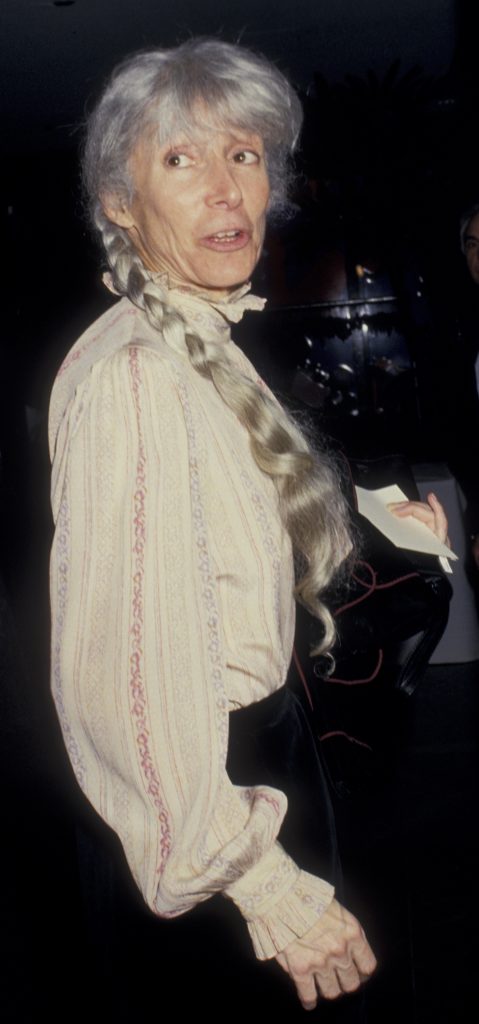
Renata Adler in New York City, June 10, 1987. (Photo by Ron Galella, Ltd./Ron Galella Collection via Getty Images)
Tatol writes, “There’s no clear economic reason for art criticism that is not glorified public relations to exist, and so it barely does.” Well, that’s true enough, and there are certainly more PR professionals than art critics at this particular point in history. But there is a very clear, even cynical reason for “negative criticism” at the level of the media economy, and we ought to acknowledge it to assess all the factors at play: People read them.
Nota bene: This is true independent of whether a negative review is just bluster or is some lonely and heroic piece of truth-telling. If anyone in your life has ever forwarded you a review of art that you had no direct connection to, it was probably a righteous pan. By default, a review that says, “this art gallery claims x is good, but I think x is bad!” is more interesting than “this art gallery claims x is good, and I also think x is good.” The former has conflict, and conflict attracts attention.
The contrarian headline—i.e. “lots of people think x, but they’re wrong!!”—is an online-media staple, often associated with clickbait. Online film discourse is full of debate about how hyperbolic takedowns of movies have become people’s model of “criticism.”
The much-circulated “let people enjoy things” meme may indeed sometimes be used to insinuate that “evaluation itself can be nothing but an act of antisocial pretension,” as Tatol writes in “Negative Criticism.” But it’s usually just a way to suggest that there is a lot of performative negativity out there aimed at the wrong targets—and who could doubt it? Again: Both positivity and negativity can be uninformed and unreflective.
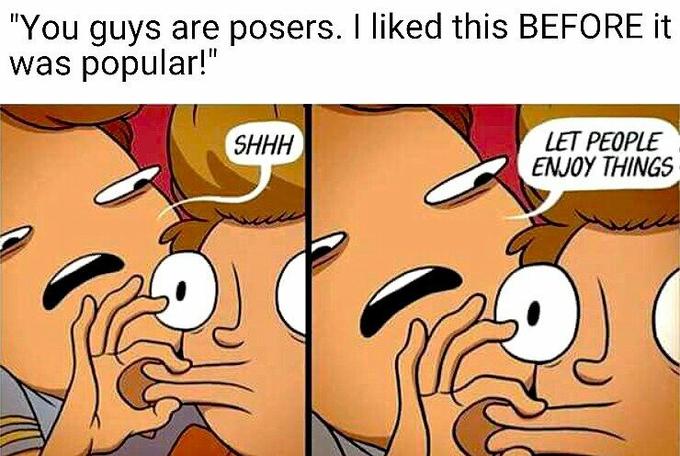
The “Let People Enjoy Things” meme in action, via KnowYourMeme.
The second reason I like the Adler quote is because I think it contains an honest bit of wisdom about a real difficulty when it comes to pumping out regular review coverage. The truth is not that everything is bad, and no one wants to say it; it’s that most things are just-OK, competent but safe, somewhat but not a lot interesting. You are therefore faced with an unfortunate choice if you have to write about them, or force yourself to.
Basically, either you write about them in a dutiful way—which is true to their own dutiful nature, but inherently enervating—or you systematically “pretend that each day’s text is after all a crisis,” as Adler says, which is far more entertaining, but encourages sloppiness and exaggeration.
(I can hear someone say, “Well, shouldn’t you be righteously mad about so much boring art?” The answer is: Sure, if you think that’s a good use of your time and emotional energy! But over-criticizing something is also the best way to get people to over-esteem it in return, and that’s how some portion of mediocre material achieves liftoff.)
What is peculiar to me about Tatol’s theory, as laid out in “Negative Criticism,” is that while he denounces the “subjective absolutism” of contemporary art writing, and suggests that you should aspire to “objective” standards of quality, he continuously undermines this case by emphasizing the subjective, self-contained nature of his own project—e.g. “A critic’s sensibilities should not be held to a standard of infallibility but to their internal coherence” or “The value of these judgments is not in their being absolutely right or wrong, but in the way they crystallize the critic’s sensibility.”
This “it’s not whether you win or lose, but how you play the game” posture captures something vital, which is that strong opinions can be valuable just because they are strong opinions. By provoking debate, they force people to clarify, to themselves and to others, the standards by which they themselves do or don’t like something.
Still, I think that in Tatol’s text the emphasis on just daring to make judgements of quality, period, is standing in for a theory of what the basis for judgements might be. Is having a particularly hardened, “internally coherent” sensibility a good on its own, or is it important that the judgements it renders be convincing to other people? If a critic cannot be held to a “standard of infallibility,” can readers ever be justified in saying a critic got it wrong? On what basis?
When I scan Tatol’s “Kritic’s Korner,” there are plenty of reviews that I find refreshing in their punchy candor.
For instance, here’s Tatol’s review of market-darling Ghanaian painter Amoako Boafo’s recent show at Gagosian: “The post-abstract rendering of skin is effective, but it’s also just one good trick that he’s leaning on to make his whole career. As the simplicity of everything that isn’t skin makes clear, he’s mostly concerned with churning out a product.”
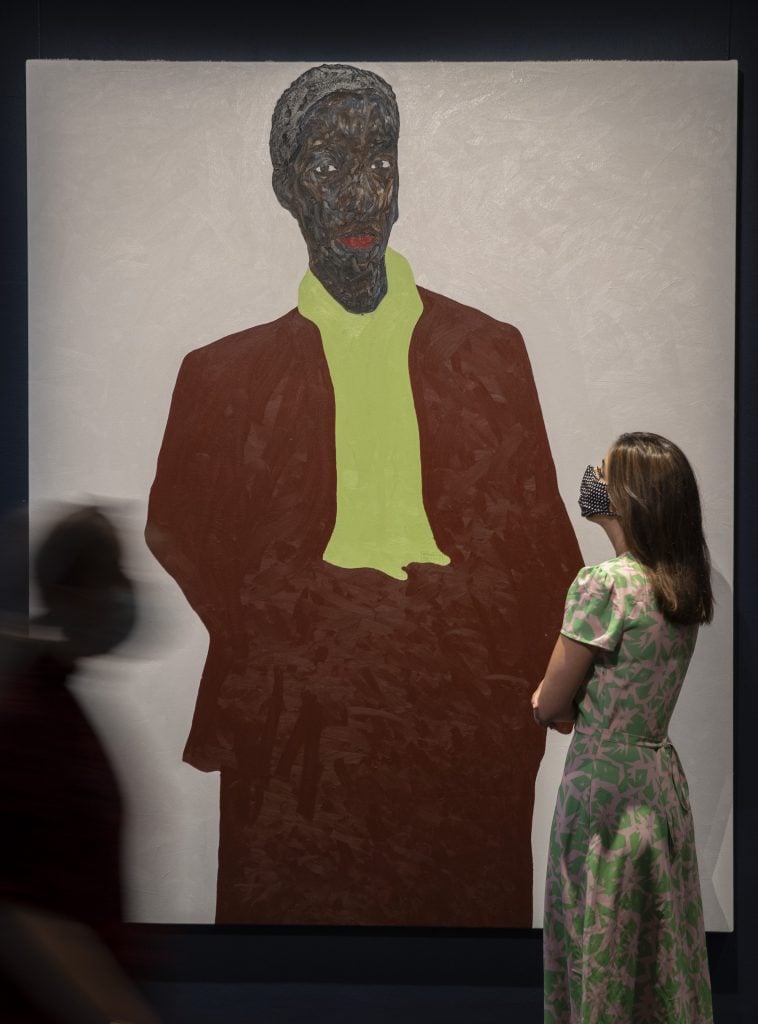
A gallery technician poses next to work titled Untitled by artist Amoako Boafo from the ‘Modern & Contemporary African Art’ at Sotheby’s. (Photo by John Phillips/Getty Images for Sotheby’s)
In just a few words, Tatol makes a persuasive case. Boafo’s signature finger-painting technique has its merits, but not so many that it sustains new kinds of interest over and over again; the paintings seem pretty lifeless otherwise; there’s a lack of new thought in each, which seems to reflect assembly-line production.
I think the review slightly mischaracterizes Boafo, in that the contrast between the highly worked skin textures and the simplified other elements is clearly not only a time-saver but is an attempt to create some sort of engaging contrast—it’s just not that engaging, so the basic point stands. The two-sentence review seems both a judgement on the weaknesses of Boafo’s painting and an analysis of the forces culpable for these weaknesses (the market, basically), rendering the stakes of the opinion clear. It feels right.
New York’s art scene is sprawling, but beneath the sprawl there’s a lot of sameness in terms of values and reference points. So a critic can assume a lot, and work fast, and still hit a target—up to a point.
Because it is also not so hard for me to find a place where I think Tatol’s peremptory judgements go off the rails either. For instance, there’s this 1.5-star review of the late Barbara Ess at Magenta Plains, a show I quite liked. (Incidentally, 1.5 stars means something between “unconditional failure” and “something I found personally offensive,” in his system.) Tatol writes, “I think this is supposed to operate on some NYC punk rock frequency that’s fundamentally foreign to me. I definitely don’t like it!”
Nothing about this feels like it hits a target.
Maybe the wooziness of Ess’s signature pinhole-camera method is what he means by “NYC punk rock frequency.” But everything about her images, from their deliberate use of color to the symbolic tension in the moments she captures, suggests thought. The whole joy of Ess’s images is their combination of rigor and roughness, her commitment to a particularly unusual self-created method to get a particular cerebral and dreamlike effect, all without falling back on conceptual-art strategies—very far from anything I might understand as “punk rock” in any meaningful sense. (I suspect Tatol read somewhere that Barbara Ess was in the ’70s music scene, and is just riffing on that; this is fussy, but Ess was technically in the No Wave scene, a reaction to punk.)
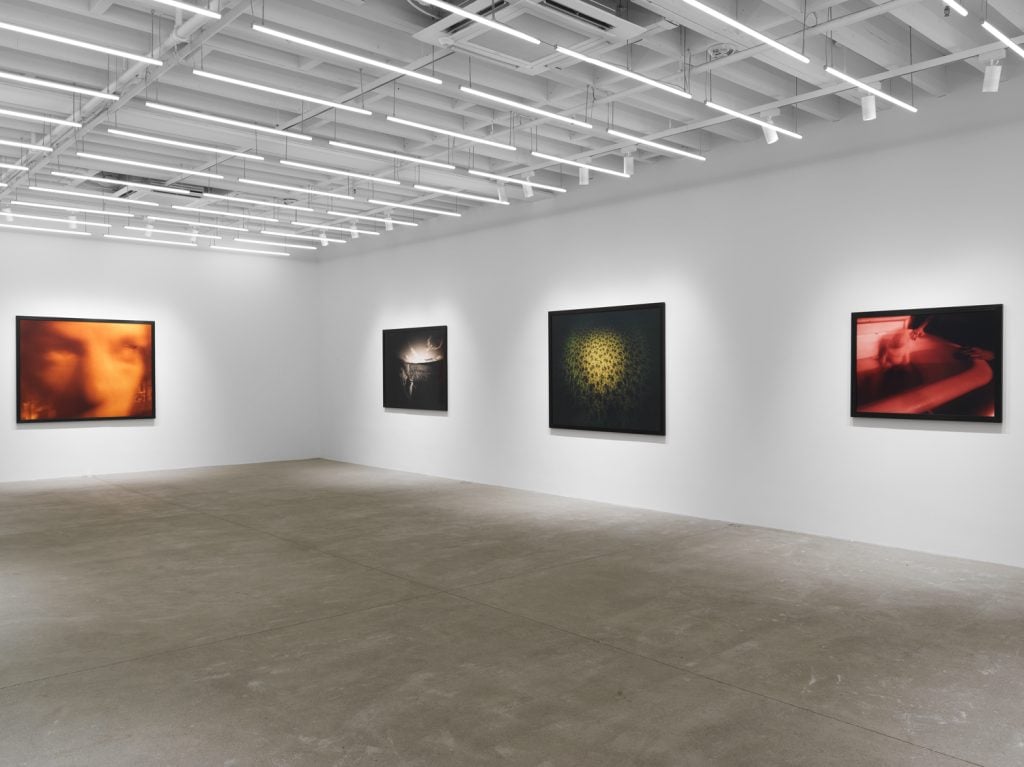
Installation view of “Barbara Ess: Inside Out” at Magenta Plains. Image courtesy Magenta Plains.
No one has to like anything, of course. But in the same way that the Boafo review is right, I think the Ess review is wrong. It doesn’t reflect what the works look like or what they are trying to do. It dismisses them based on random personal antipathy (“I definitely don’t like it!”).
And this is almost what is bound to happen when the theory in play is that “strong opinions” or “judgements of quality” or “negative reviews” are the point, detached from any other grounding—it ends up being an excuse for snap dismissals.
Ultimately, I can’t quite square Tatol’s exalted theory of the role criticism serves in “Negative Criticism”—as role-modeling “the slow development of intellectual maturity”—with the expedient reasons behind his high-volume criticism in the “Kritic’s Korner” (i.e. “a regular stream of blithe, off-the-cuff reviews would attract more attention.”) It’s curious to adopt the latter method when lack of sustained engagement with individual form and the assembly-line pumping out of content stand accused, within the Manhattan Art Review, of leading to a lot of bad thinking about art.
To Tatol’s three horsemen of the Critical Apocalypse—greed, indifference, and literal-minded sloganeering—I would add a fourth, slightly less voluntaristic: “degeneration of the media environment.”
Since the transcendent attitudinizing Robert Christgau’s music criticism is the template here, it’s worth saying how much labor his model of criticism demanded of his disciples. Here’s Simon Frith explaining the full-spectrum effort that Christgau put into helping shape his writing: “Editing sessions… were technical—let’s get rid of some widows!—irritable—what are all these dashes?—and philosophical. Christgau was more rigorous than any tutor I ever had about evidence and accuracy. And he was much more obsessed by good writing.”
It takes time to cultivate a writer’s voice, gaining exposure to a variety of different forms of writing—literature, philosophy, art history—to synthesize into a distinctive perspective that people want to read. It also takes time to go see lots of art, and to seek out the art worth writing about within the mass of what there is to see. It definitely takes time to do the work of thinking about each show as an individual thing, to find out enough to check your preconceptions and do justice to the work, either positively or negatively. It takes time to do the actual writing. And all of these levels are under greater and greater stress.
Part of the reason that Sean Tatol’s passion-project Manhattan Art Review attracts a lot of comment is that there is just less and less regular review coverage of non-famous, local shows at all. This is because it is a tall order for these to get the attention they need to justify the labor. Meanwhile, as media has accelerated and attention diffused, less-invested forms of culture writing have emerged and proliferated. In some ways, more culture writing circulates than ever before, but with fewer resources invested in any individual piece of writing. What you get is a great sense of redundancy and thinness.
It’s because of this background that I would want to ground a theory of contemporary art criticism more than “Negative Criticism” does, to distinguish what it’s calling for from one of the genres of less-invested writing that has come to define the times: the hot take, the quickly produced broadside that merely uses the latest topic to reiterate a pre-formed opinion. But it is also because of that background of ambient media entropy that I think Tatol’s call for negativity channels larger frustrations that resonate beyond the rather technical sphere of art criticism—which is why it’s got me spending so much time thinking about it.
I have more to say on this, in the next part of this essay.
Read the second part of this essay, here.